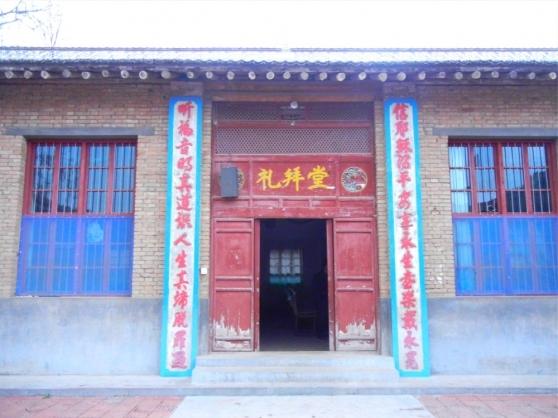When it comes to the introduction of Christianity into modern China, two evangelism approaches were adopted: one, by the group of foreign missionaries known as the “liberal group”, aimed at influencing the culture of the upper classes of Chinese intellectuals. The other approach, advocated by the group known as the "fundamentalists", preached salvation to the working class. The latter group reached remote villages where many less fortunate peasants received comfort and became Christians.
Owing to the rapid expansion of rural churches, fundamentalist Christians, especially those connected with the China Inland Mission (CIM), transferred its jurisdiction down to every local church in the countryside. Fortunately, by being autonomous, the rural church itself cultivated its workers and exercised its own leadership.
However, the personnel in the urban church almost vanished as foreign missionaries were evacuated from mainland China. Socialist movements such as the Great Leap Forward and the Cultural Revolution struck a heavy blow to the urban church which soon collapsed and was barely resurrected while village churches mushroomed, thanks to having their own authority to manage and cultivate needed talent.
Since the emphasis of CIM's evangelism was to save souls from hell, the theology of "salvation" was in accordance with Chinese folk religions and therefore became popular. The basic structure of Chinese folk religion was Manichaeism and Maitreyanism that both stressed salvation through joining a religion.
A critical factor in the revival of rural churches was the combination of "salvation" theology of the fundamentalists together with folk religion. In 1978 when the movement ended and reform and opening up started, the country commenced to focusing on developing the rural areas by solving the problems of food shortages stemming from stagnant productivity during the Revolution. However, after six years of focusing on agricultural development, the government shifted its focus to urban industrialization.
According to statistics from the Religion Blue Book: Chinese Religion Report published in 2010, the number of rural congregations grew slowly during that period. This report showed that before 1965, 3% of the population in China were Christians. The number rose to 5.7% from 1966 to 1981. Christianity was negligible after the Cultural Revolution because most rural people were not so poor and therefore "salvation" theology, which addressed the person's dire condition, lost its appeal. The year 1984 was the last year to indicate the number of rural households with savings or an annual revenue of 10,000 yuan or more (considered a large amount at that time). Economic policies began prioritizing the development of industry and cities over the countryside by giving subsidies to cities in the price squeeze.
As medical insurance failed to cover the rural areas and peoples' communed were dismantled, a rural person who became ill needed a great deal of money for medical treatment. Due to a lack of education and adequate medical support as well as high costs of agricultural production, peasants lived in poverty and gloom from 1984 to 2000, the time when China joined the World Trade Organization (WTO).
Once again the theology of the traditional churches appealed to Chinese farmers in the rural areas because it addressed their situation of suffering and promised the healing of their illnesses. It was at this time that the rural church reached a higher peak than at any time before. Different Christian groups emerged and various kinds of cults and heresies invaded the countryside such as the resurgence of the Shouters sect, the rise of the "Eastern Lightning", and the foundation of "Three Grades of Servants".
What was more, Christianity also took the role of providing culture and entertainment. Apart from open-air movies, hymns and programs performed on Good Friday and Christmas became the only form of public recreation. Except for the followers of cults and other heretical groups, Christians accounted for 60% of the population from 1982 to 2002, according to the Religion Blue Book (2010) mentioned above.
Traditional fundamentalism had a great harvest during the twenty years in which the rural regions were "abandoned".
However, as China joined the WTO, massive numbers of rural people migrated to cities looking for jobs. This promoted urbanization and spurred industry and the building boom. The abolition of the agricultural tax on Jan. 1, 2006 marked the end of agriculture nurturing industry and began the improvement in the lives of peasants. In that year, the New Rural Cooperative Medical System (NRCMS) became available to all rural residents. Basic old-age insurance for rural residents was also implemented and the elderly above 60 began to receive pensions.
The rural church started to decline and some Christian groups that sprang up during the 1980's and '90's began to break up. The decline not only referred to the decrease in the number of rural Christians and slowing number of new believers but also showed up as a feeble response to social issues.
The theological doctrines that focus primarily on salvation and suffering created a focus on rituals and miracles, emphasizing the religious form of redemption through prayer. The rural church failed to serve the left-behind elderly and children caused by the phenomenon of "migrant workers". Moreover, the popularization of televisions, smartphones, square dancing, and cultural squares could have made the closed rural community more open. Unfortunately, the rural church has remained secluded, waiting for new members to come to it.
To sum up, the decline of the rural church is inevitable. Having Inherited the basic doctrines of the CIM, it belongs to a specific time in the past and is incompatible with today's era.
- Translated by Karen Luo














